| Your cart is currently empty. |
Back to stories
Majolica has something magical and a unique attraction that makes you marvel. That’s how it’s for me, but it should have been for the people in the first half of the 16th century when Italian potters first introduced this luxury product in the Low Countries. This product was exotic, innovative, and decorated in bright, shining colors on a tin-glazed ground, in contradiction with the brown, yellow, and green lead-glazed ceramics that were common. The majolica production mainly included plates, dishes, and tiles, but also porridge bowls and pharmaceutical ware such as albarelli and syrup jars. Other shapes, such as drinking bowls, jugs, salts, and mustard pots, are more exceptional. This collection also has one unique object, a majolica mortar with a date of 1603.
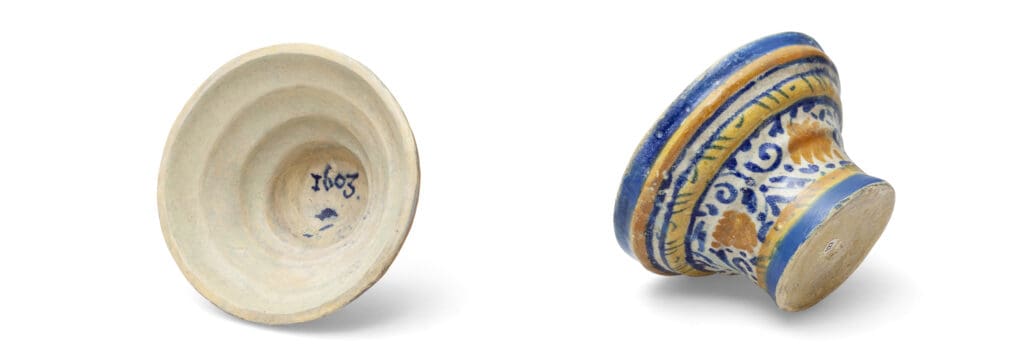
In the Netherlands, the first majolica was produced in Flanders, in cities such as Antwerp and Bruges, but also a bit more north in Bergen op Zoom. All by potters from Southern Europe. In the second half of the 16th century, the technique of making majolica spread out to the north, to cities such as Haarlem, Delft, and Amsterdam. These early productions are characterized by decorations derived from the Italian Renaissance and ornamental and geometrical decorations from the Spanish-Islamic culture. A beautiful example is the early Antwerp deep dish with Christ as Man of Sorrows, painted within a rim decorated with branches and flowers, which shows influence from Venice and Deruta.
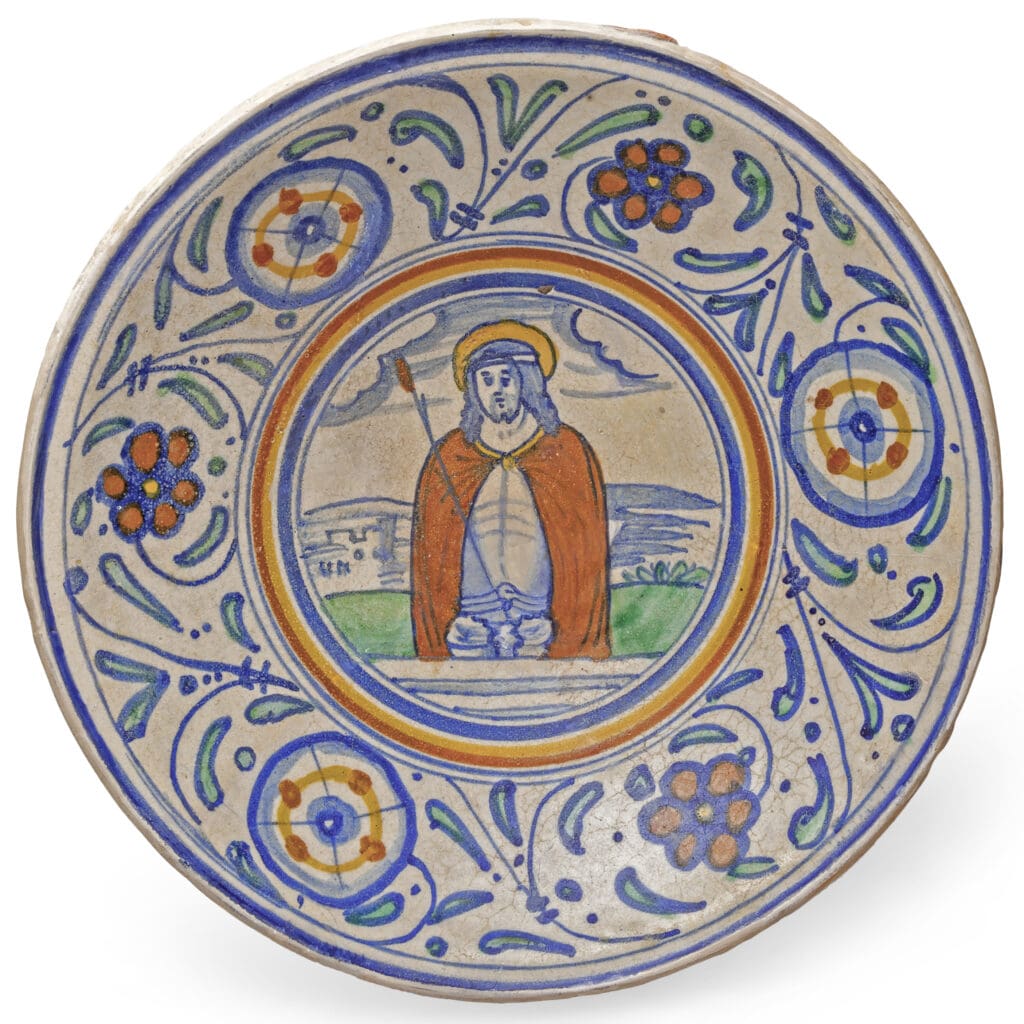
Also, after an Italian example is a porridge bowl with a portrait of a monarch or a goddess. Unusual is that she is painted with bare breasts, which is a symbol of unchastity. The lady is painted within an ‘a foglie’ rim containing leaves, flowers, and fruits.
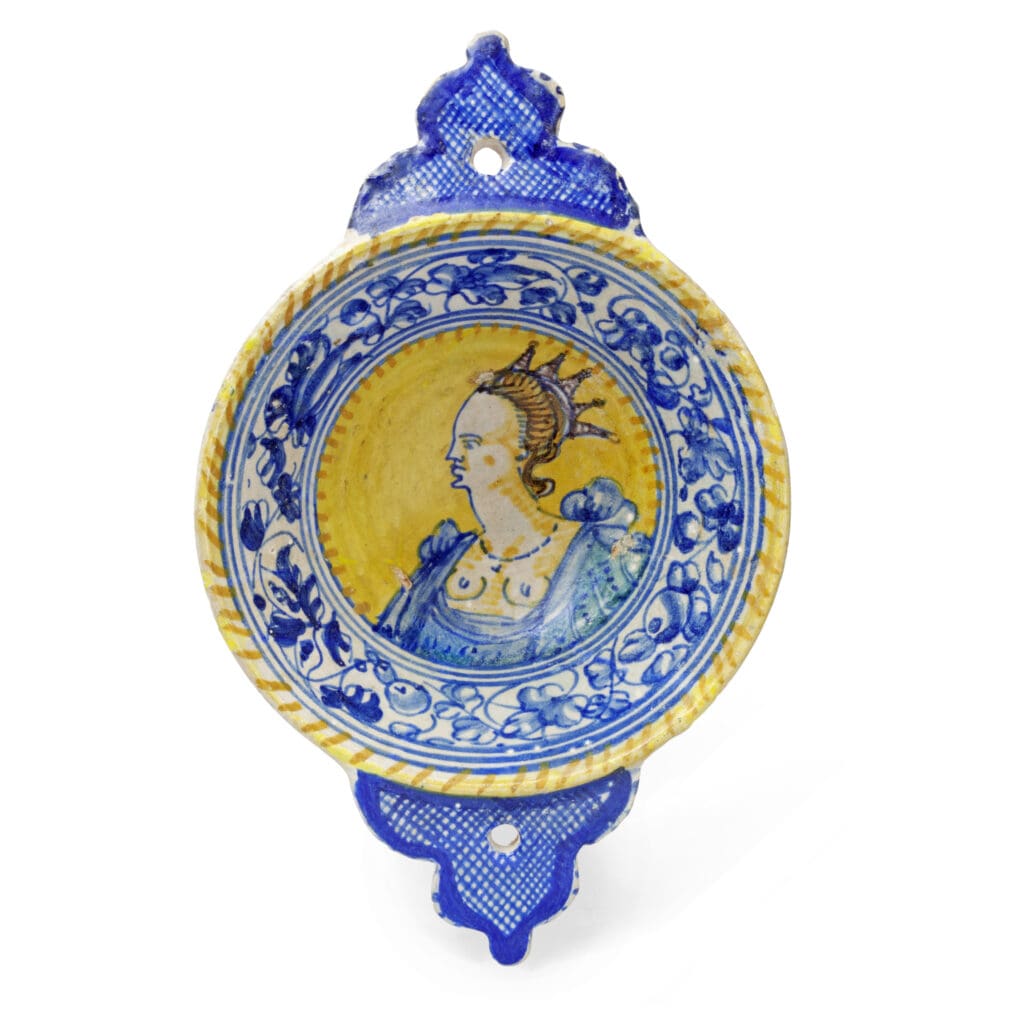
Another quite remarkable Italian influence is majolica with a total blue ground. This so-called ‘’berettino blue’’ finds its origin in Faenza. Between 1620 and 1640, this became very popular in the Netherlands. Important production cities are Hoorn, Haarlem, and Harlingen. The decorations vary from ornaments to flowers and animals.
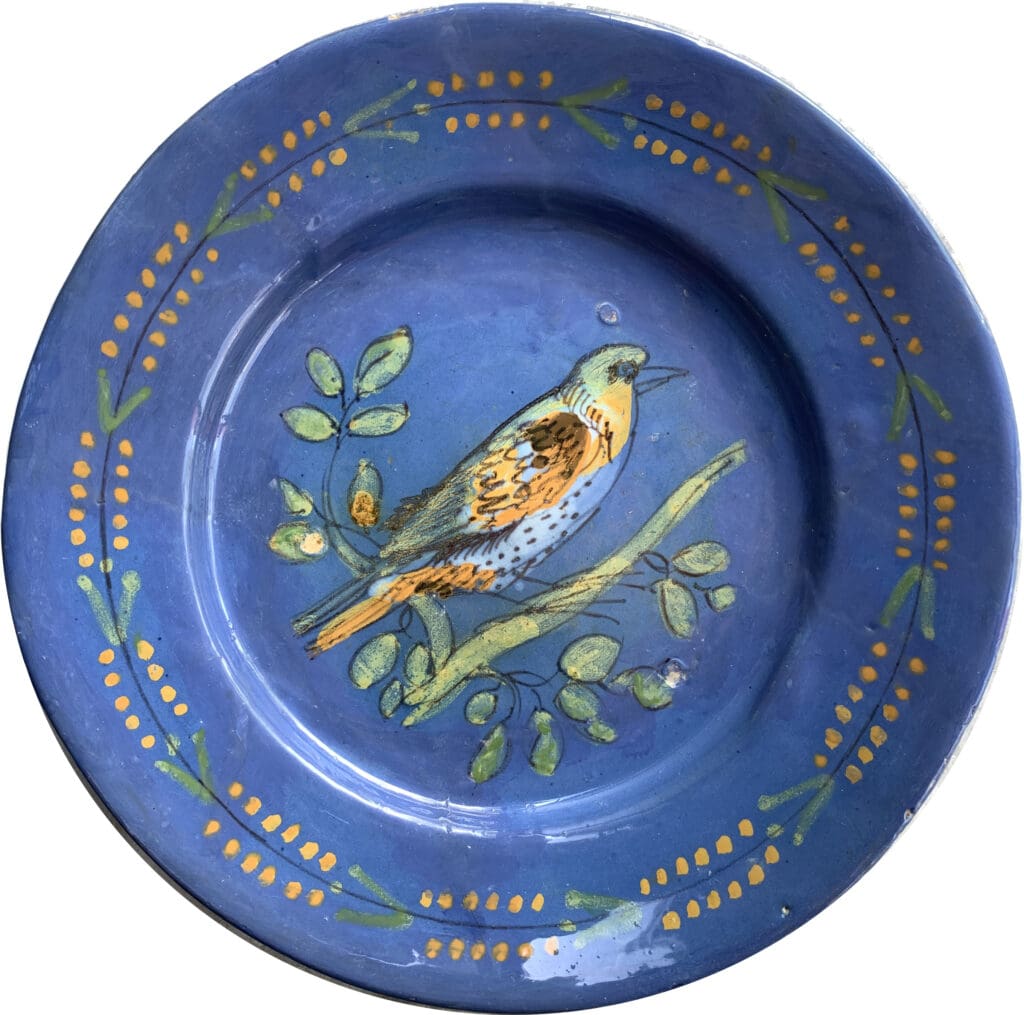
The probably in Haarlem produced dish with ornamental decoration shows wonderful influence from the Spanish-Islamic culture. A flower is placed within a medallion, which is the center of a star. Leaves and hatched arcs were then painted around the star to close the picture.
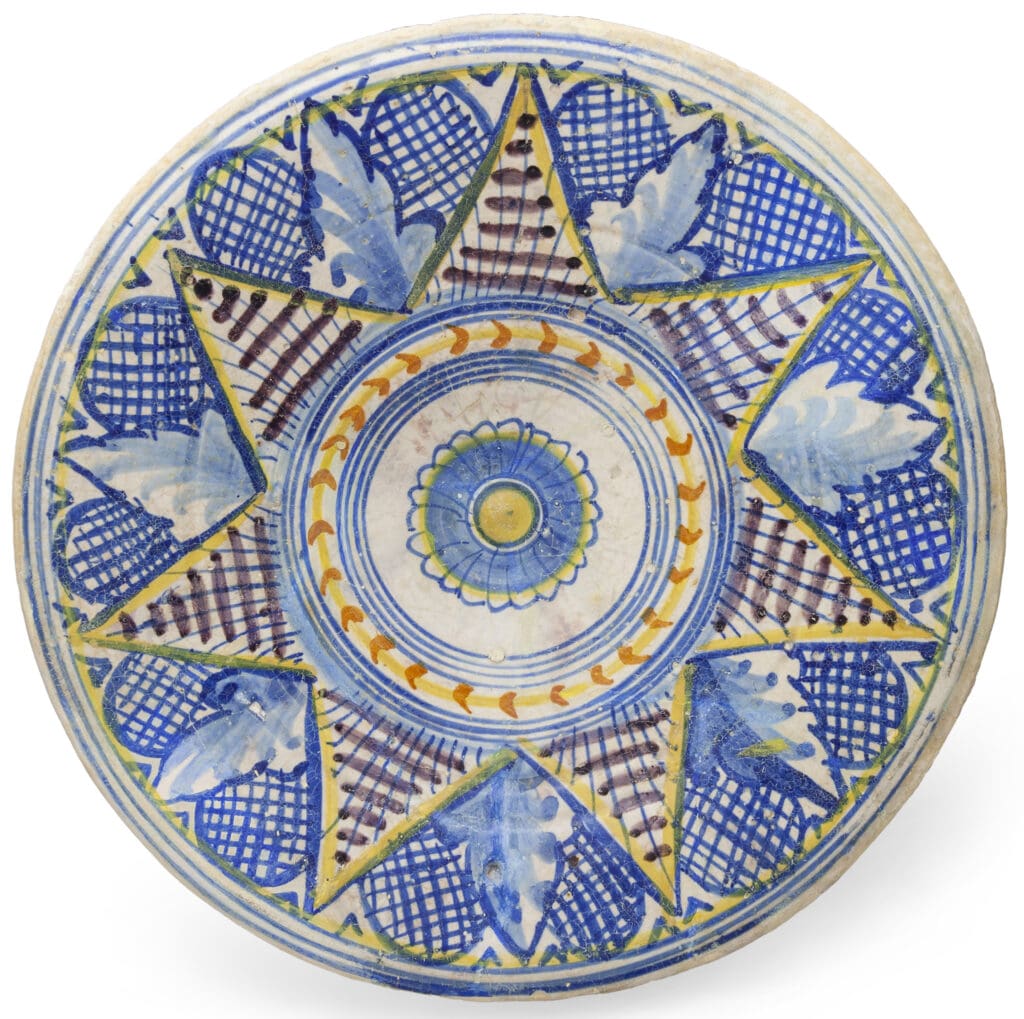
At the beginning of the 17th century, almost every city in the Netherlands produced majolica. From this moment on, we also see scenes from daily life. Decorations of people, landscapes, fruits, animals, birds, and flowers. With the decoration of a flower, the tulip
can be mentioned separately. The tulip has been frequently used as decoration since the introduction of this flower in the last quarter of the 16th century. The decorations mentioned before occur as a stand-alone image or in combination with the aforementioned cultural influences. The dish with the decoration of a hare painted in a landscape is an excellent example. The landscape is placed within a broad rim of leaves forming a star. A decoration of fruits and pomegranates has been used as a filling between the leaves.
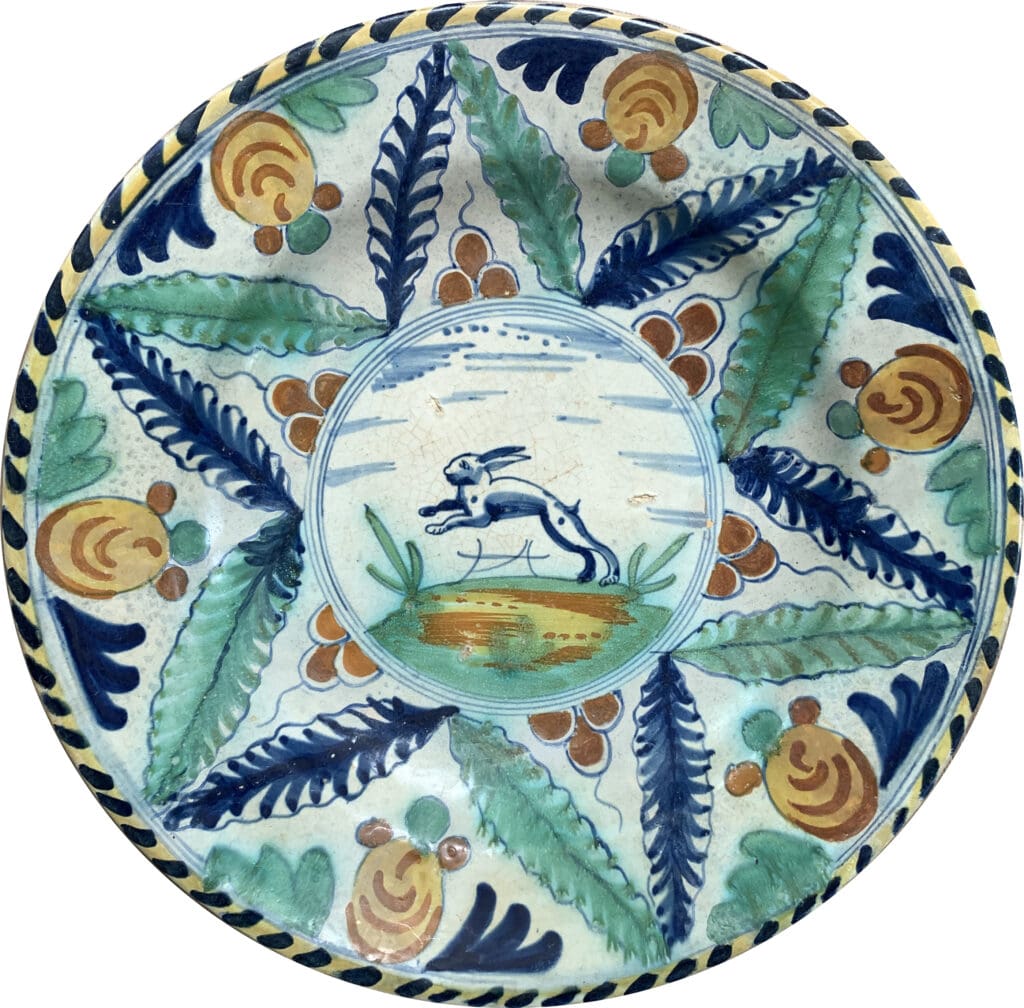
Dishes completely decorated with pomegranates, grapes, and other fruits find their origin in Venice and were very popular in the first half of the 17th century, and still are. A notable example is the dish with a ‘’three-dimensional’’ Italian Renaissance rim.
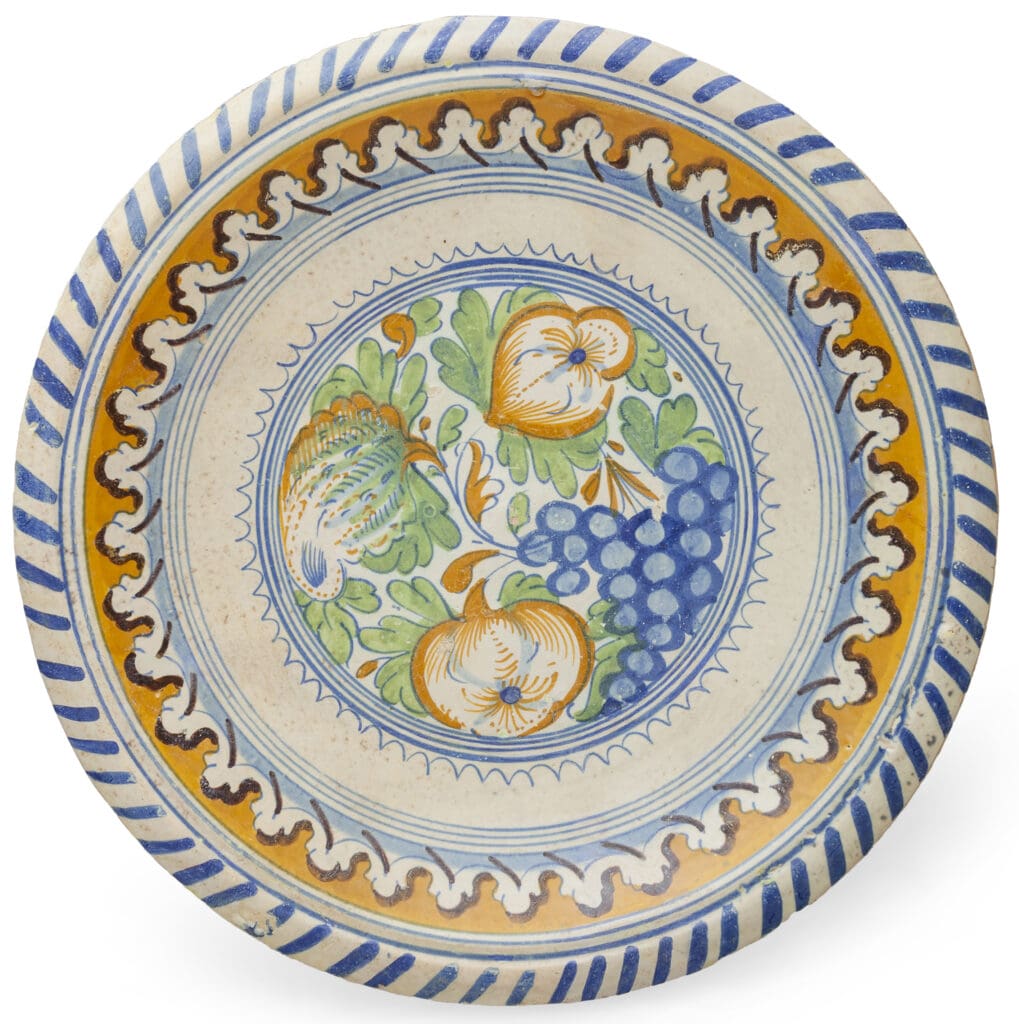
Pomegranates and grapes, with their many seeds, are symbols of life, luck, and fertility.
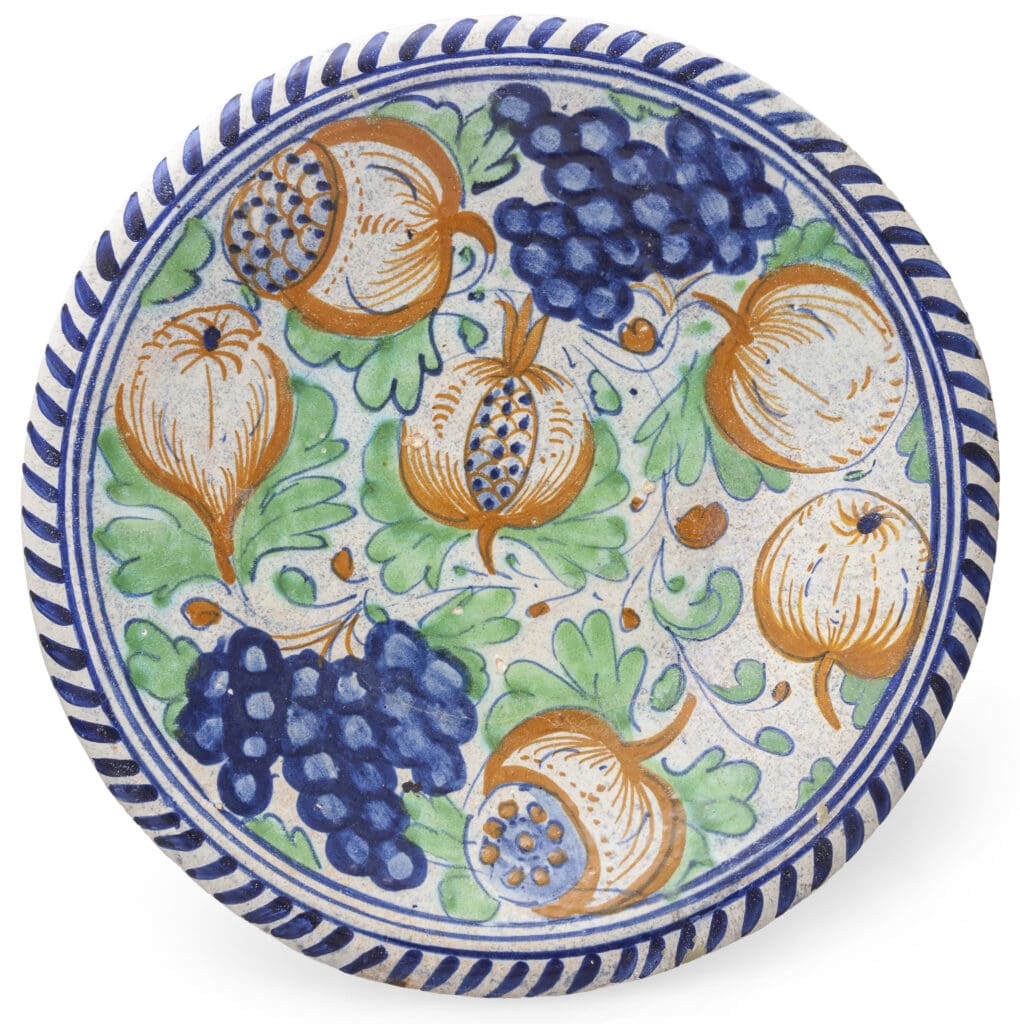
The decoration on majolica could also be submitted as a special order. A family coat of arms, city arms, or, as we can see on two plates: a decoration that is probably related to an innkeeper guild. We see an innkeeper on both plates, with cheese or bread under his arm. In the landscapes, in the background, we see a jug, a symbol for this guild. Three travelers and a city gate are even painted on one of the plates.
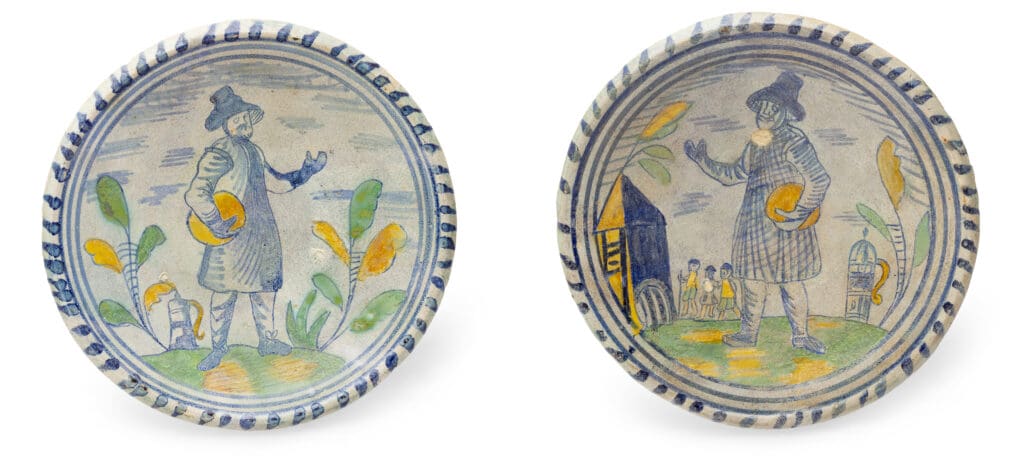
Decorations with a religious message were probably also made on order. Decorations of monograms from, for example, Mary or Jesus have a Catholic background, which was not allowed to be expressed openly in the Dutch Republic.
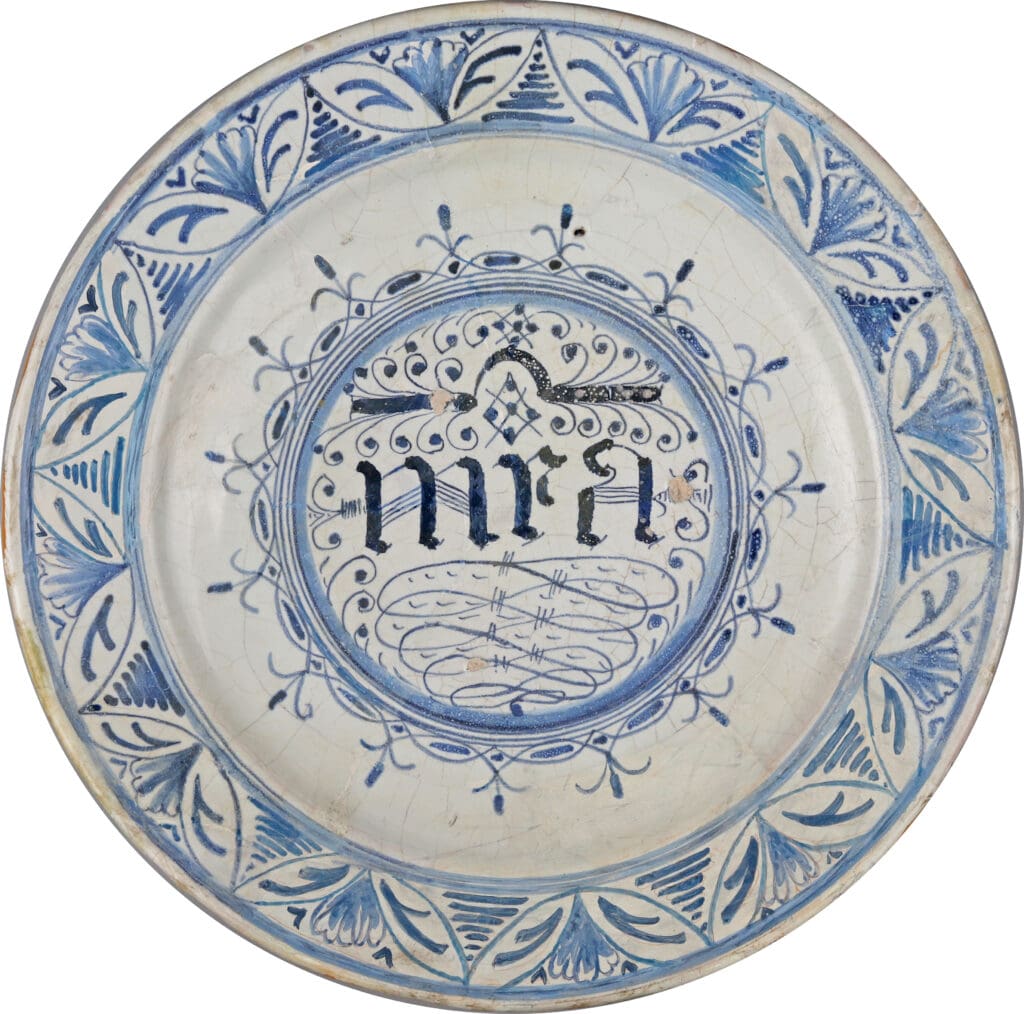
Last, an influence we can’t forget is China. Because of the import of Chinese porcelain, the fashion of the 17th century was strongly influenced. The decorations from the porcelain were imitated, and pottery painters were inspired by it. We can see direct copies of porcelain but also Chinese decorations in combination with European subjects.
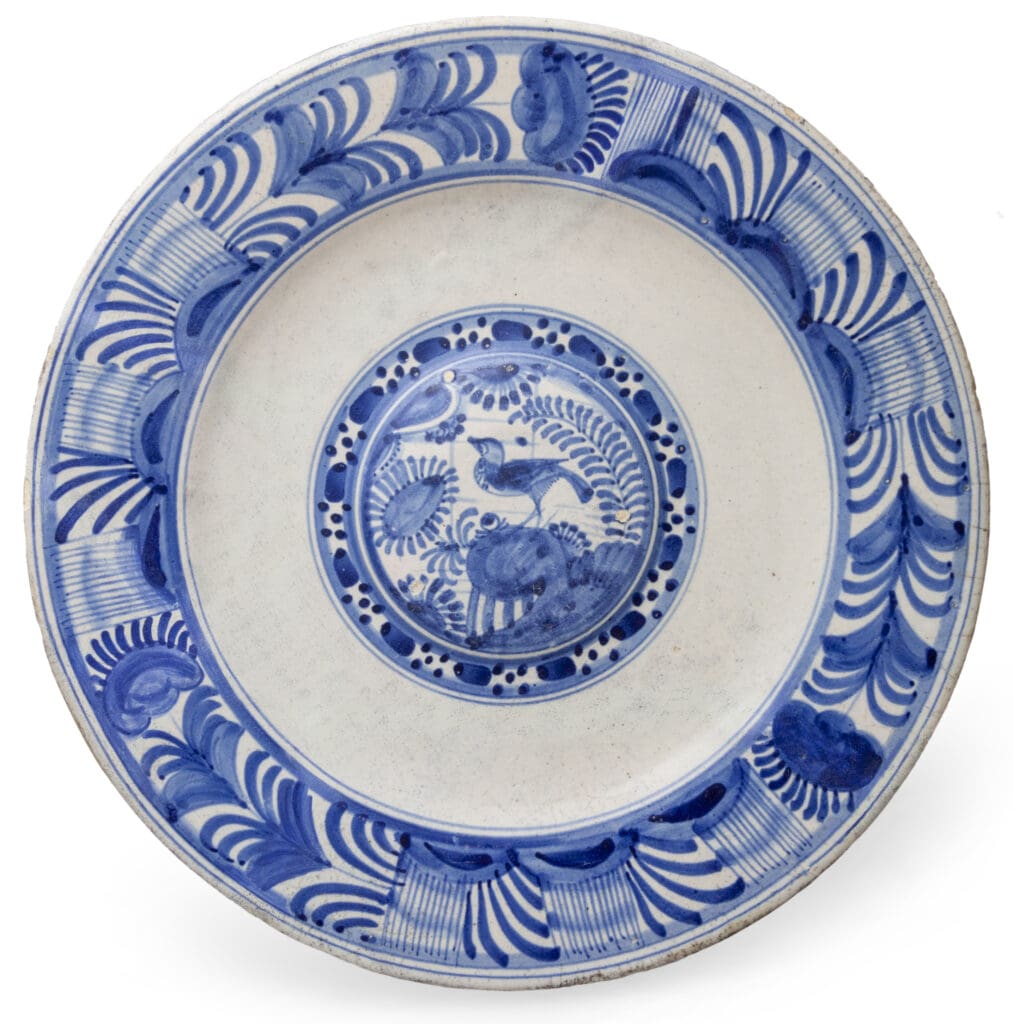
Altogether, this collection of majolica contains the ‘’Dutch’’ identity of the 16th and 17th century, which was, just as nowadays, a true fusion of world cultures.